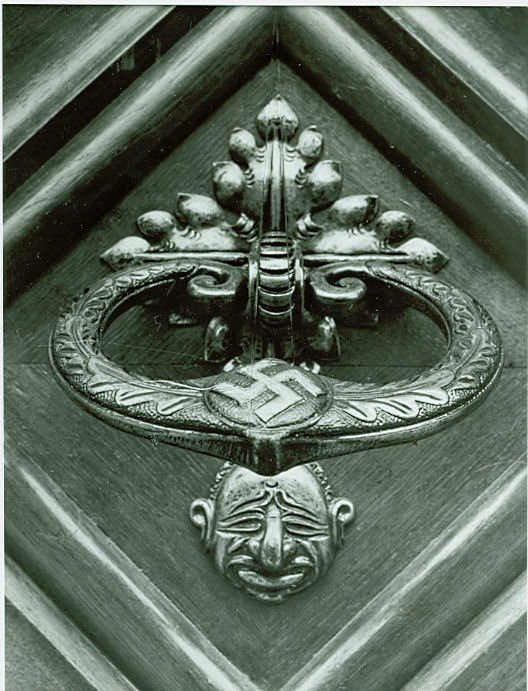Source

Source: Antisemitic door knocker, 1937. Stadtarchiv Lauf an der Pegnitz, L11.
Antisemitism assumed many forms in everyday life in Nazi Germany. At the official level, Jewish persecution was enacted through government policies and laws such as those announced at the 1935 Nazi Party Rally in Nuremberg (i.e. the Nuremberg Laws). Additionally, and more generally, hatred towards Jews was also conveyed in smaller acts and symbols. For instance, the knocker in the image below, which was affixed to a door on the Old City Hall in Lauf an der Pegnitz near Nuremberg, features a male face whose features—especially his large nose and round face—draw on stereotypical antisemitic iconography that has long been used to portray Jews as greedy, corrupt, and physically dissimilar to so-called “Aryan” Germans. When Germans used this particular knocker, they would literally pound on a Jew’s head and thereby participate in the symbolic “othering” of their Jewish neighbors. Examples of this sort show that antisemitism was not just imposed from above by the regime; it also sprang from the bottom up, infecting and permeating everyday life and objects. The knocker was not removed until 1954.

Source: Antisemitic door knocker, 1937. Stadtarchiv Lauf an der Pegnitz, L11.
© Stadtarchiv Lauf an der Pegnitz